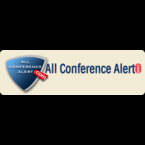Session & Tracks
Track 1: Gynecology and Obstetrics
Gynecology is the branch of medical science focused on the health of the female reproductive system and overall reproductive health. It involves the study of the uterus and other female genital organs. Gynecology and obstetrics are closely related fields that address the entire female reproductive system. While obstetrics focuses specifically on pregnancy, childbirth, and pregnancy-related complications, gynecology covers the care of women who are not pregnant, including adolescent girls and those who have reached puberty. Gynecologists treat conditions related to the uterus, fallopian tubes, ovaries, and other reproductive organs, whereas obstetricians specialize in the care of pregnant women, childbirth, and postpartum care.
Related Associations: The Association of Professors of Gynecology and Obstetrics (APGO) | The Association of Program Managers in Ob-Gyn (APMOG) | ISUOG International Society of professionals in Ultrasound for Obstetrics and Gynecology | Zambia Association of Gynaecologists & Obstetricians (ZAGO) | Vietnam Gynaecology and Obstetrics Association VINAGOFPA | Ukrainian Association of Obstetricians and Gynaecologists | Taiwan Association of Obstetrics and Gynecology | Sierra Leone Association of Gynaecologists and Obstetricians
Track 2: Women's Health
Women face distinct health issues, including pregnancy, menopause, and conditions related to the female reproductive organs. With proper, early, and regular prenatal care, a healthy pregnancy is achievable. Additionally, routine screenings for cervical cancer, breast cancer, and bone density are recommended. Diet and nutrition are crucial for women's health, with essential nutritional practices including high-protein diets and adequate calcium intake.
Related Associations: The Association of Professors of Gynecology and Obstetrics (APGO) | The Association of Program Managers in Ob-Gyn (APMOG) | ISUOG International Society of professionals in Ultrasound for Obstetrics and Gynecology | Zambia Association of Gynaecologists & Obstetricians (ZAGO) | Vietnam Gynaecology and Obstetrics Association VINAGOFPA | Ukrainian Association of Obstetricians and Gynaecologists | Taiwan Association of Obstetrics and Gynecology | Sierra Leone Association of Gynaecologists and Obstetricians
Track 3: Menstrual Cycle and Ovulation
Throughout a woman's life, from puberty to menopause, her body undergoes numerous changes each month in preparation for a potential pregnancy. This process is known as the menstrual cycle. The length of the menstrual cycle can vary from woman to woman, but it typically ranges between 23 and 30 days. For most women, the period between ovulation and the start of their next menstrual period is between 12 to 16 days
A woman’s menstrual cycle typically is divided into four phases
Related Associations: The Association of Professors of Gynecology and Obstetrics (APGO) | The Association of Program Managers in Ob-Gyn (APMOG) | ISUOG International Society of professionals in Ultrasound for Obstetrics and Gynecology | Zambia Association of Gynaecologists & Obstetricians (ZAGO) | Vietnam Gynaecology and Obstetrics Association VINAGOFPA | Ukrainian Association of Obstetricians and Gynaecologists | Taiwan Association of Obstetrics and Gynecology | Sierra Leone Association of Gynaecologists and Obstetricians
Track 4: Gynecologic oncology
Gynecologic oncology is a medical specialty focused on cancers of the female reproductive system. Gynecologic oncologists are experts with extensive training and knowledge dedicated to diagnosing and treating these types of cancers.
Cancers including:
Threat factors involve rotundity, inheritable mutations, mortal Papilloma Contagion, Gravidity
Related Associations: The Association of Professors of Gynecology and Obstetrics (APGO) | The Association of Program Managers in Ob-Gyn (APMOG) | ISUOG International Society of professionals in Ultrasound for Obstetrics and Gynecology | Zambia Association of Gynaecologists & Obstetricians (ZAGO) | Vietnam Gynaecology and Obstetrics Association VINAGOFPA | Ukrainian Association of Obstetricians and Gynaecologists | Taiwan Association of Obstetrics and Gynecology | Sierra Leone Association of Gynaecologists and Obstetricians
Track 5: Pregnancy
Fertilization occurs when sperm meets an egg released from the ovary during ovulation, leading to the development of an embryo and foetus in the woman's uterus. A full-term pregnancy typically lasts about 40 weeks and is divided into three trimesters:
-
First trimester (weeks 1-12)
-
Second trimester (weeks 13-27)
-
Third trimester (weeks 28-40)
During pregnancy, it is essential for women to follow a healthy diet and receive proper care to ensure the well-being of both the baby and themselves.
Related Associations: The Association of Professors of Gynecology and Obstetrics (APGO) | The Association of Program Managers in Ob-Gyn (APMOG) | ISUOG International Society of professionals in Ultrasound for Obstetrics and Gynecology | Zambia Association of Gynaecologists & Obstetricians (ZAGO) | Vietnam Gynaecology and Obstetrics Association VINAGOFPA | Ukrainian Association of Obstetricians and Gynaecologists | Taiwan Association of Obstetrics and Gynecology | Sierra Leone Association of Gynaecologists and Obstetricians
Track 6: Advancements in Gynaecology and Obstetrics
The incidence of obesity among adult women and teenagers is rising, as is the number of Cesarean deliveries. Advances in women's health include increased genetic testing, awareness of diseases such as Zika and dengue, and the management of conditions like preeclampsia-related stroke deaths. Cannabis use and advancements in obstetrics are also notable. Obstetricians and gynecologists need to possess and demonstrate the skills, knowledge, and judgment necessary to perform thorough examinations, including neck, chest, bone, abdominal, and lower limb assessments, for both pregnant and non-pregnant women.
Related Associations: The Association of Professors of Gynecology and Obstetrics (APGO) | The Association of Program Managers in Ob-Gyn (APMOG) | ISUOG International Society of professionals in Ultrasound for Obstetrics and Gynecology | Zambia Association of Gynaecologists & Obstetricians (ZAGO) | Vietnam Gynaecology and Obstetrics Association VINAGOFPA | Ukrainian Association of Obstetricians and Gynaecologists | Taiwan Association of Obstetrics and Gynecology | Sierra Leone Association of Gynaecologists and Obstetricians
Track 7: Polycystic ovary syndrome (PCOS)
Polycystic ovary syndrome (PCOS) is a common condition among women of reproductive age, typically affecting those between 15 and 44 years old. Women with PCOS may experience infrequent or prolonged menstrual periods, elevated levels of male hormones and androgens, and the development of numerous small fluid-filled sacs in the ovaries. This hormonal imbalance often results in the ovaries failing to release eggs regularly. While the exact cause of PCOS is not known, it is believed to involve multiple factors, such as insulin resistance and elevated androgen levels. Early diagnosis and treatment, including weight loss, can help reduce the risk of long-term complications like type 2 diabetes and heart disease.
PCOS Symptoms:
Related Associations: The Association of Professors of Gynecology and Obstetrics (APGO) | The Association of Program Managers in Ob-Gyn (APMOG) | ISUOG International Society of professionals in Ultrasound for Obstetrics and Gynecology | Zambia Association of Gynaecologists & Obstetricians (ZAGO) | Vietnam Gynaecology and Obstetrics Association VINAGOFPA | Ukrainian Association of Obstetricians and Gynaecologists | Taiwan Association of Obstetrics and Gynecology | Sierra Leone Association of Gynaecologists and Obstetricians
Track 8: COVID-19
People of all ages can contract coronavirus disease 2019 (COVID-19). However, most young people who become infected tend to experience less severe symptoms compared to adults, and some may not show any symptoms at all. While children are capable of contracting COVID-19, they generally do not become as ill as adults. This is likely due to their developing immune systems and lower airways, which may make them more susceptible to respiratory issues with viral infections. Most children with COVID-19 experience mild symptoms or none at all, but in some cases, children can become severely ill and may require hospitalization, intensive care, or a ventilator. Rarely, severe cases can be fatal.
Symptoms of COVID-19:
Related Associations: The Association of Professors of Gynecology and Obstetrics (APGO) | The Association of Program Managers in Ob-Gyn (APMOG) | ISUOG International Society of professionals in Ultrasound for Obstetrics and Gynecology | Zambia Association of Gynaecologists & Obstetricians (ZAGO) | Vietnam Gynaecology and Obstetrics Association VINAGOFPA | Ukrainian Association of Obstetricians and Gynaecologists | Taiwan Association of Obstetrics and Gynecology | Sierra Leone Association of Gynaecologists and Obstetricians
Track 9: Women Reproductive Cancers
Reproductive cancers are cancers that affect the organs involved in reproduction. These cancers occur in the reproductive organs and include breast cancer, cervical cancer, prostate cancer, and testicular cancer. In women, reproductive cancers also encompass ovarian cancer, uterine cancer, vaginal cancer, and vulvar cancer. Ovarian cancer affects the ovaries, which produce female hormones and eggs, while uterine cancer occurs in the uterus (womb), where a baby develops. Reproductive cancers can also affect the prostate, testicles, and penis in men. Vaginal cancer specifically affects the vagina.
Related Associations: The Association of Professors of Gynecology and Obstetrics (APGO) | The Association of Program Managers in Ob-Gyn (APMOG) | ISUOG International Society of professionals in Ultrasound for Obstetrics and Gynecology | Zambia Association of Gynaecologists & Obstetricians (ZAGO) | Vietnam Gynaecology and Obstetrics Association VINAGOFPA | Ukrainian Association of Obstetricians and Gynaecologists | Taiwan Association of Obstetrics and Gynecology | Sierra Leone Association of Gynaecologists and Obstetricians
Track 10: Abortion and Miscarriage
Abortion: Abortion refers to the medical or surgical termination of a pregnancy before the foetus can live independently outside the womb. There are two main types of abortion:
-
Medical Abortion: This involves taking medication to end a pregnancy. It is typically used early in the pregnancy and may involve a combination of medications taken orally or vaginally.
-
Surgical Abortion: This includes various procedures to remove the embryo or foetus from the uterus. Common methods include aspiration (suction), dilation and curettage (D&C), and dilation and evacuation (D&E).
Reasons for abortion vary and may include personal, health-related, or socio-economic factors. It's a complex and often sensitive issue, and access to abortion services varies widely depending on legal, cultural, and medical factors in different regions.
Miscarriage: Miscarriage, or spontaneous abortion, is the natural loss of a pregnancy before the 20th week. It is a common occurrence, with about 10-20% of known pregnancies ending in miscarriage.
Causes of Miscarriage:
-
Genetic Factors: Chromosomal abnormalities in the embryo are the most common cause.
-
Maternal Health Conditions: Conditions such as diabetes, thyroid disorders, and autoimmune diseases can increase the risk.
-
Lifestyle Factors: Smoking, excessive alcohol consumption, and drug use can contribute to miscarriage.
-
Physical Factors: Problems with the uterus or cervix, or severe trauma can also play a role.
-
Infections: Certain infections can impact the viability of the pregnancy.
Symptoms of Miscarriage:
-
Vaginal bleeding or spotting
-
Cramping or abdominal pain
-
Passage of tissue or clots from the vagina
-
Loss of pregnancy symptoms such as nausea or breast tenderness
Management and Support: Miscarriage can be emotionally challenging, and support from healthcare professionals, counselors, or support groups can be beneficial. In some cases, medical intervention may be needed to complete the miscarriage and ensure that the uterus is clear of tissue.
Both abortion and miscarriage are significant events in reproductive health, and understanding their causes, implications, and management options is crucial for supporting those affected.
Related Associations: The Association of Professors of Gynecology and Obstetrics (APGO) | The Association of Program Managers in Ob-Gyn (APMOG) | ISUOG International Society of professionals in Ultrasound for Obstetrics and Gynecology | Zambia Association of Gynaecologists & Obstetricians (ZAGO) | Vietnam Gynaecology and Obstetrics Association VINAGOFPA | Ukrainian Association of Obstetricians and Gynaecologists | Taiwan Association of Obstetrics and Gynecology | Sierra Leone Association of Gynaecologists and Obstetricians
Track 11: Prenatal Health line
A woman's health is crucial for the well-being of her child. To ensure a healthy baby, many women engage in regular exercise, maintain a nutritious diet, and receive consistent prenatal care. It is advised for all women to minimize complications during pregnancy by following a balanced diet, which can reduce the risk of birth defects, support healthy birth weight, and promote proper fetal brain development. Since maintaining a well-rounded diet can be challenging during pregnancy, prenatal vitamin supplements are also important to help meet nutritional needs. Avoiding alcohol, smoking, and drug use is essential for ensuring a positive outcome.
Key Areas:
-
Food and nutrition
-
Medication during pregnancy
-
Antenatal care
-
Support for active mothers
Related Associations: The Association of Professors of Gynecology and Obstetrics (APGO) | The Association of Program Managers in Ob-Gyn (APMOG) | ISUOG International Society of professionals in Ultrasound for Obstetrics and Gynecology | Zambia Association of Gynaecologists & Obstetricians (ZAGO) | Vietnam Gynaecology and Obstetrics Association VINAGOFPA | Ukrainian Association of Obstetricians and Gynaecologists | Taiwan Association of Obstetrics and Gynecology | Sierra Leone Association of Gynaecologists and Obstetricians
Track 12: Birth Defects
Some children are born with body parts or organs that have abnormalities or functional issues, which are known as birth defects. These can affect how the body processes food into energy or other functions. Birth defects range from minor issues to severe conditions requiring medical or surgical intervention. There are over 4,000 different types of birth defects. Common types include structural defects, such as heart defects, congenital hip dislocation, spina bifida, and clubfoot. Metabolic birth defects, which affect how the body processes substances, can also occur, though the exact cause is often unknown.
Examples of Birth Defects:
Care and Treatment: Treatment may involve medications, surgeries, or home care, depending on the nature and severity of the defect.
Related Associations: The Association of Professors of Gynecology and Obstetrics (APGO) | The Association of Program Managers in Ob-Gyn (APMOG) | ISUOG International Society of professionals in Ultrasound for Obstetrics and Gynecology | Zambia Association of Gynaecologists & Obstetricians (ZAGO) | Vietnam Gynaecology and Obstetrics Association VINAGOFPA | Ukrainian Association of Obstetricians and Gynaecologists | Taiwan Association of Obstetrics and Gynecology | Sierra Leone Association of Gynaecologists and Obstetricians
Track 13: Advances in Global Women Health
Gender-based health disparities are evident across the globe, with these inequalities being more pronounced in less affluent countries. Women in developing nations are particularly affected, often lacking essential healthcare, which leads to life-threatening medical conditions. Issues such as child marriage, female genital mutilation, maternal mortality, HIV/AIDS, and cervical cancer are significant concerns in these regions.
Despite government and organizational efforts to implement programs and policies, gender-based health disparities persist in some developing countries. While access to education and employment for women has increased, challenges like illiteracy, child marriage, and high rates of mortality and morbidity continue to impact not only women but also their families, children, and society at large.
Key Focus Areas:
Related Associations: The Association of Professors of Gynecology and Obstetrics (APGO) | The Association of Program Managers in Ob-Gyn (APMOG) | ISUOG International Society of professionals in Ultrasound for Obstetrics and Gynecology | Zambia Association of Gynaecologists & Obstetricians (ZAGO) | Vietnam Gynaecology and Obstetrics Association VINAGOFPA | Ukrainian Association of Obstetricians and Gynaecologists | Taiwan Association of Obstetrics and Gynecology | Sierra Leone Association of Gynaecologists and Obstetricians
Track 14: Complementary Therapies in Nursing and Midwifery
Complementary therapies are treatments used alongside conventional medical practices, including methods like herbal therapies, manual healing, reflexology, and acupuncture. These therapies are becoming increasingly popular among the general public. When performed by trained and experienced practitioners, complementary and alternative therapies are generally considered safe.
Related Associations: The Association of Professors of Gynecology and Obstetrics (APGO) | The Association of Program Managers in Ob-Gyn (APMOG) | ISUOG International Society of professionals in Ultrasound for Obstetrics and Gynecology | Zambia Association of Gynaecologists & Obstetricians (ZAGO) | Vietnam Gynaecology and Obstetrics Association VINAGOFPA | Ukrainian Association of Obstetricians and Gynaecologists | Taiwan Association of Obstetrics and Gynecology | Sierra Leone Association of Gynaecologists and Obstetricians
Track 15: Latest Advancement in treatment
Recent advancements in assisted reproductive technology have significantly improved fertility outcomes for men with low sperm counts or azoospermia. Additionally, the development of new selective anti-muscarinic drugs for bladder over-activity has enhanced treatment effectiveness while reducing side effects. Injury to the anal sphincter is a common occurrence following vaginal childbirth, though its prevention and proper management are still not fully understood.
Sub-Tracks:
Related Associations: The Association of Professors of Gynecology and Obstetrics (APGO) | The Association of Program Managers in Ob-Gyn (APMOG) | ISUOG International Society of professionals in Ultrasound for Obstetrics and Gynecology | Zambia Association of Gynaecologists & Obstetricians (ZAGO) | Vietnam Gynaecology and Obstetrics Association VINAGOFPA | Ukrainian Association of Obstetricians and Gynaecologists | Taiwan Association of Obstetrics and Gynecology | Sierra Leone Association of Gynaecologists and Obstetricians
Track 16: Women Oncology
Oncology is a branch of medicine focused on the prevention, diagnosis, and treatment of cancer. A medical professional specializing in this field is known as an oncologist. The three key factors that contribute to improved cancer survival rates are: Prevention—reducing risk factors such as tobacco and alcohol use; Early Detection—screening for common cancers; and Accurate Diagnosis and Staging.
Key Areas:
Related Associations: The Association of Professors of Gynecology and Obstetrics (APGO) | The Association of Program Managers in Ob-Gyn (APMOG) | ISUOG International Society of professionals in Ultrasound for Obstetrics and Gynecology | Zambia Association of Gynaecologists & Obstetricians (ZAGO) | Vietnam Gynaecology and Obstetrics Association VINAGOFPA | Ukrainian Association of Obstetricians and Gynaecologists | Taiwan Association of Obstetrics and Gynecology | Sierra Leone Association of Gynaecologists and Obstetricians
Track 17: Infertility
Infertility refers to a woman’s inability to conceive or to carry a pregnancy to full term. It is the inability of a person, plant, or animal to reproduce naturally, which is typically not the natural state of a healthy adult organism, except in some eusocial species. Understanding the socio-demographic factors related to infertility can help newly married couples with family planning.
Key Areas:
Related Associations: The Association of Professors of Gynecology and Obstetrics (APGO) | The Association of Program Managers in Ob-Gyn (APMOG) | ISUOG International Society of professionals in Ultrasound for Obstetrics and Gynecology | Zambia Association of Gynaecologists & Obstetricians (ZAGO) | Vietnam Gynaecology and Obstetrics Association VINAGOFPA | Ukrainian Association of Obstetricians and Gynaecologists | Taiwan Association of Obstetrics and Gynecology | Sierra Leone Association of Gynaecologists and Obstetricians
Track 18: Drugs, Vaccines and Immunization for Children
Vaccines protect children from infectious diseases and help shield those who come into contact with unvaccinated, infected individuals. By vaccinating children, we safeguard both our community and our children's health. Before the advent of vaccines, many children succumbed to diseases like whooping cough and polio—illnesses that vaccines can now effectively prevent.
Related Associations: The Association of Professors of Gynecology and Obstetrics (APGO) | The Association of Program Managers in Ob-Gyn (APMOG) | ISUOG International Society of professionals in Ultrasound for Obstetrics and Gynecology | Zambia Association of Gynaecologists & Obstetricians (ZAGO) | Vietnam Gynaecology and Obstetrics Association VINAGOFPA | Ukrainian Association of Obstetricians and Gynaecologists | Taiwan Association of Obstetrics and Gynecology | Sierra Leone Association of Gynaecologists and Obstetricians
Track 19: Breast Feeding and Formula Feeding
Breastfeeding and Formula Feeding are two primary methods of providing nutrition to infants. Each has its own benefits, challenges, and considerations:
Breastfeeding: Breastfeeding is the process of feeding a baby directly from the mother's breast. Breast milk is the natural, ideal food for infants, providing the perfect balance of nutrients and antibodies needed for a baby’s growth and development.
Benefits:
-
Nutritional Excellence: Breast milk contains the right mix of nutrients, including proteins, fats, vitamins, and minerals.
-
Immune Support: It is rich in antibodies that help protect the baby from infections and diseases.
-
Bonding: The physical closeness during breastfeeding strengthens the emotional bond between mother and baby.
-
Convenience and Cost: Breast milk is always available, at the right temperature, and free.
-
Health Benefits for Mothers: Breastfeeding can help reduce the risk of postpartum depression, aids in faster postpartum recovery, and may lower the risk of certain cancers and chronic conditions.
Challenges:
-
Physical Demand: Breastfeeding can be physically demanding and may require significant time and effort.
-
Dietary Considerations: The mother's diet and health directly affect the quality of breast milk.
-
Public and Workplace Barriers: Some mothers may face challenges finding time or space to breastfeed or pump, particularly in public or at work.
-
Formula Feeding: Formula feeding involves feeding a baby with a commercially prepared formula that mimics the nutritional profile of breast milk. Formula is usually made from cow's milk that has been processed to be suitable for infants.
Benefits:
-
Flexibility: Formula feeding allows other family members to help with feeding, offering more flexibility for the mother.
-
Convenience: Formula feeding can be done anywhere and at any time, without the need for the mother to be present.
-
Diet Independence: The mother’s diet and health do not affect the quality of the baby’s nutrition.
-
Challenges:
-
Cost: Formula can be expensive over time.
-
Preparation: Formula needs to be carefully prepared and stored, ensuring it is at the correct temperature and free from contamination.
-
Lack of Immune Support: Unlike breast milk, formula does not contain antibodies, so it doesn’t provide the same immune protection.
-
Digestive Differences: Some babies may experience digestive issues, such as constipation or gas, with formula.
Combination Feeding:
Some parents choose to combine both breastfeeding and formula feeding, providing flexibility while still offering the benefits of breast milk.
Each method of feeding has its own set of pros and cons, and the choice often depends on the mother's circumstances, health, lifestyle, and the baby's needs. It's important to consult with a healthcare provider to determine the best feeding approach for both mother and baby.
Related Associations: The Association of Professors of Gynecology and Obstetrics (APGO) | The Association of Program Managers in Ob-Gyn (APMOG) | ISUOG International Society of professionals in Ultrasound for Obstetrics and Gynecology | Zambia Association of Gynaecologists & Obstetricians (ZAGO) | Vietnam Gynaecology and Obstetrics Association VINAGOFPA | Ukrainian Association of Obstetricians and Gynaecologists | Taiwan Association of Obstetrics and Gynecology | Sierra Leone Association of Gynaecologists and Obstetricians
Track 20: Reproduction and Sexual Health
Reproduction and Sexual Health encompass a broad range of physical, emotional, and social aspects related to the reproductive system and sexual well-being. These concepts are crucial for understanding and maintaining overall health throughout life.
Reproduction: Reproduction refers to the biological process by which new individual organisms are produced. In humans, this involves the fusion of male and female gametes (sperm and egg) to form a zygote, which eventually develops into a foetus and, after gestation, is born as a baby.
Key Components:
-
Sexual Reproduction: Involves the combination of genetic material from two parents. This process typically includes sexual intercourse, fertilization, and pregnancy.
-
Fertility: The ability to conceive and bear children. Fertility can be influenced by factors such as age, health, lifestyle, and underlying medical conditions.
-
Contraception: Methods used to prevent pregnancy. This includes hormonal methods (e.g., birth control pills), barrier methods (e.g., condoms), and permanent methods (e.g., sterilization).
-
Infertility: The inability to conceive after a year or more of regular, unprotected sex. Infertility can affect both men and women and may require medical intervention.
-
Sexual Health: Sexual health refers to a state of physical, emotional, mental, and social well-being related to sexuality. It involves having a positive and respectful approach to sexuality and sexual relationships, as well as the ability to have safe and satisfying sexual experiences, free from coercion, discrimination, and violence.
Key Components:
-
Safe Sex Practices: Behaviours that reduce the risk of sexually transmitted infections (STIs) and unwanted pregnancies, such as using condoms and getting regular sexual health check-ups.
-
STIs: Infections transmitted through sexual contact, such as HIV/AIDS, syphilis, gonorrhoea, chlamydia, and human papillomavirus (HPV). Early detection and treatment are vital.
-
Sexual Education: Information and education about human sexuality, including anatomy, reproduction, sexual orientation, gender identity, consent, and healthy relationships.
-
Sexual Rights: The right to have control over and make decisions about one's sexual and reproductive health, free from violence, discrimination, and coercion. This includes the right to access sexual and reproductive health services and information.
-
Mental and Emotional Health: Addressing issues like sexual orientation, gender identity, sexual satisfaction, and the psychological impact of sexual abuse or dysfunction.
Importance of Reproductive and Sexual Health:
-
Public Health: Ensuring access to reproductive and sexual health services is essential for reducing the incidence of STIs, unwanted pregnancies, and reproductive cancers.
-
Individual Well-Being: Proper sexual health care promotes a healthy, satisfying life, preventing and treating sexual dysfunctions, and promoting healthy relationships.
-
Social and Economic Impact: Educating people about reproductive and sexual health can lead to better outcomes in family planning, reduce healthcare costs, and empower individuals to make informed decisions about their bodies and relationships.
Both reproduction and sexual health are integral to a person’s overall health and well-being, influencing various aspects of life from adolescence through adulthood.
Related Associations: The Association of Professors of Gynecology and Obstetrics (APGO) | The Association of Program Managers in Ob-Gyn (APMOG) | ISUOG International Society of professionals in Ultrasound for Obstetrics and Gynecology | Zambia Association of Gynaecologists & Obstetricians (ZAGO) | Vietnam Gynaecology and Obstetrics Association VINAGOFPA | Ukrainian Association of Obstetricians and Gynaecologists | Taiwan Association of Obstetrics and Gynecology | Sierra Leone Association of Gynaecologists and Obstetricians
















